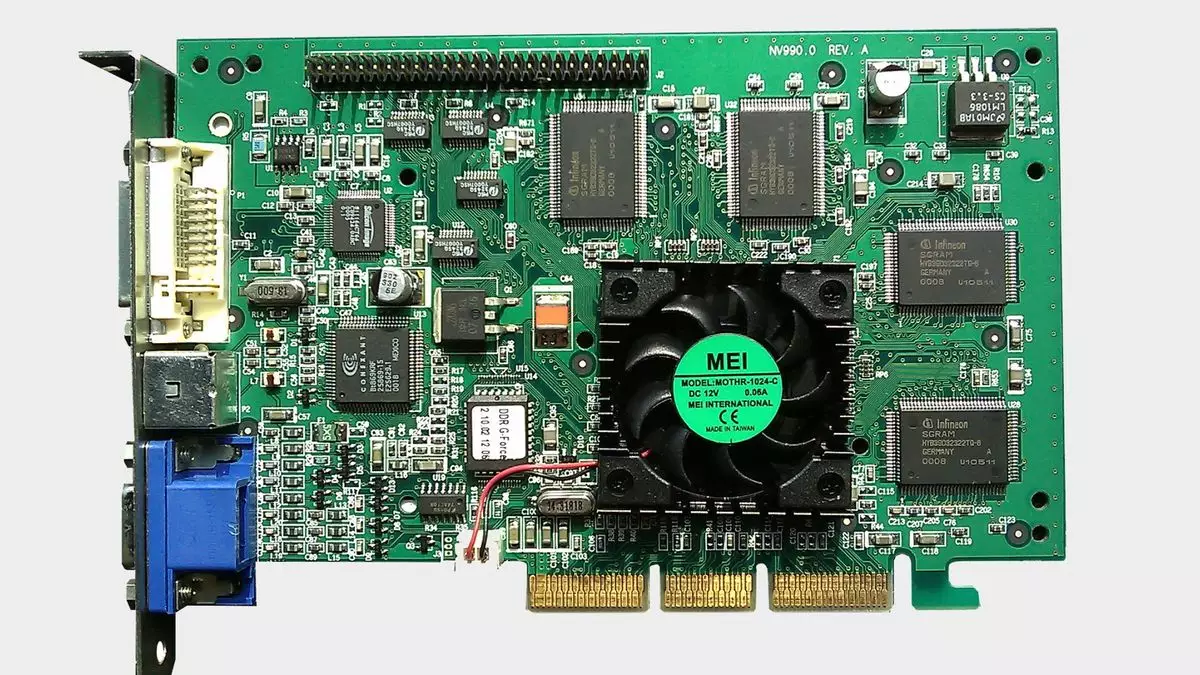On October 11, 2024, we celebrate the 25th anniversary of a groundbreaking piece of hardware—the Nvidia GeForce 256. Although it may appear archaic by today’s standards, this pioneering graphics card marked the dawn of the GPU era and is a significant landmark in the history of gaming. Its introduction not only reshaped how we approach computer graphics but also laid the foundation for the technological advancements that would follow.
To understand the significance of the GeForce 256, it is essential to consider the context of the late 1990s. Computer gaming was gaining traction, yet the resources required to render complex graphics often rested heavily on CPUs. The GeForce 256 broke this mold as the first product to effectively market itself as a “graphics processing unit,” despite the fact that Sony had earlier utilized the term in reference to its PlayStation 1’s hardware. Still, Nvidia’s savvy branding positioned the GeForce 256 as a revolutionary product that would redefine what a gaming GPU could be.
At its core, the GeForce 256 boasted an impressive (for the time) 32 MB of memory and operated at a core clock speed of 120 MHz. But these numbers tell only part of the story. The card’s architecture featured the innovative 256-bit QuadPipe Rendering Engine, enabling it to efficiently process graphics through four pixel pipelines. With a fill rate of 480 million pixels per second, the GeForce 256 was capable of increasing frame rates dramatically compared to its contemporaries like the 3dfx Voodoo3 and the Nvidia RIVA TNT2 Ultra.
What set the GeForce 256 apart was its implementation of hardware transform and lighting (T&L). This critical feature offloaded rendering tasks from the CPU, enhancing performance and freeing developers to create visually-rich game environments. At a time when polygons made all the difference, this GPU allowed game designers to push boundaries, resulting in a notable surge in the complexity and visual fidelity of computer games.
It is fascinating to look back and see how the GeForce 256 fared against the competition. With up to 50% better performance in T&L-enabled titles compared to other cards of its era, it quickly made a name for itself among enthusiasts. In the following weeks after its release, gamers flocked to stores, eager to upgrade their systems and experience a new level of graphical excellence.
The arrival of DDR variants shortly after the original release pushed the specifications even further and offered enhanced performance while solidifying Nvidia’s place in the market. Simultaneously, it stimulated healthy competition within the GPU industry, pushing companies to innovate at a rapid pace. The GeForce 256 served not just as a superior product but also as a catalyst for further advancements in computer technology.
1999 was not only a significant year for Nvidia but also a momentous one for gaming, with the release of titles like *Unreal Tournament* and *Quake III Arena*. These iconic games put the GeForce 256 to the test and created an environment ripe for multiplayer experiences that would captivate gamers. The timing was impeccable; players with the GeForce 256 found themselves equipped to fully enjoy these groundbreaking titles, ushering in a new era of competitive gaming.
Reflecting today on the games we played back then, it becomes clear how pivotal the GeForce 256 was in shaping our gaming experiences. Its ability to render high-quality graphics made a significant difference, leading many to consider upgrading their setups specifically to take full advantage of what the card could offer.
In a world where graphics cards have become behemoths demanding ever-increasing power, it is almost comforting to reminisce about the modest TDP ratings of units like the GeForce 256, which operated with an incredibly low power consumption of 13/12 watts. Looking back at the technological leaps we’ve witnessed over the past quarter-century—from 17 million transistors to modern GPUs with over 76 billion—we appreciate both the progress made and the journey taken.
So, as we commemorate the 25th birthday of the GeForce 256, it serves as more than just a retro relic; it is a reminder of how far technology has come and the giants upon whose shoulders today’s innovations stand. Dust off that old GPU if you have one cluttering your attic, celebrate its legacy with a small acknowledgment, and extend the gratitude owed to the pioneers of gaming hardware. The GeForce 256 deserves recognition not just for its specifications but for the door it opened to a new age of digital entertainment. Cheers to the GeForce 256; we truly didn’t know how good we had it.

